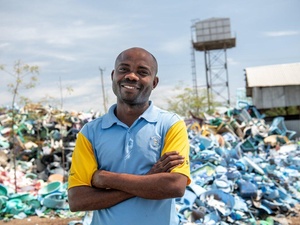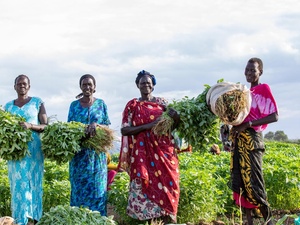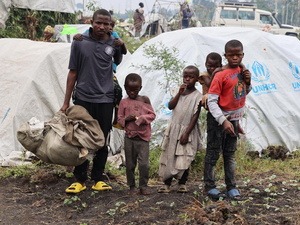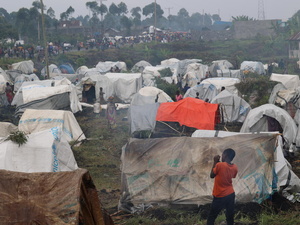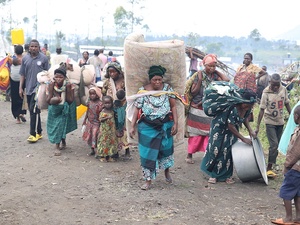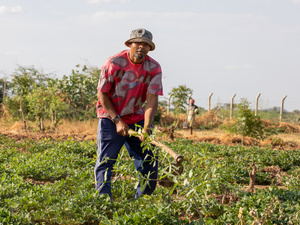DRC: Thousands from North Kivu still on Ugandan side of border
DRC: Thousands from North Kivu still on Ugandan side of border
There are still some 25,000 to 30,000 Congolese refugees at Bunagana on the Ugandan side of the border with the troubled North Kivu province in the east of the Democratic Republic of the Congo (DRC). Most had fled last week's escalation in fighting between the Congolese army, renegade troops and rebels. They are staying close to the border, keen to go back as soon as the situation improves. Ugandan authorities, fearing an outbreak of cholera because of congestion and a lack of adequate sanitation, water and health facilities, on Monday asked them to either move to the UNHCR-supported Nyakabanda reception centre some 20 km inside Uganda or return to the DRC.
There are now some 1,500 refugees at the Nyakabanda reception centre where UNHCR teams, together with MSF, have set up shelter facilities. Over the weekend, we distributed blankets, jerry-cans and plastic cups in Nyakabanda. WFP distributed food to 1,000 people. A Ugandan health team in cooperation with MSF France provided medical screening at the reception centre.
Inside the DRC, the situation in North Kivu province has somewhat calmed since last Friday. That allowed us to improve support to some of an estimated 35,000 internally displaced people (IDPs) stranded in the Mugunga area, 15 kilometres west of Goma. Our reports indicate that some displaced from Sake have returned during daylight, mainly to check their houses, amid deployments of MONUC peacekeepers. However, most IDPs from Sake and Masisi district continue to put up makeshift huts in the Mugunga area, awaiting more information on security conditions.
Last Friday, we set up the new Bulengo camp for displaced together with UNICEF and NGO partners. Over the weekend, hundreds of displaced have moved from makeshift, overcrowded sites and a nearby school complex to the new camp. Two UNHCR site planners arrived in Goma last Friday and are demarcating plots, communal kitchen areas, and sites for latrines and washrooms at the new Bulengo camp close to Mugunga. The new site has the capacity for some 25,000 people under minimum humanitarian standards. Hundreds of families have already started constructing shelters. We are planning to transfer pregnant women and children by truck from makeshift camps to the new site.
We remain concerned with limited access to other areas in Masisi and Rutshuru districts due to the tense security situation. We fear only a small part of the recent displacement in the North Kivu may be known and that there are other sites where humanitarian assistance has not reached. Estimates are that since December 2006, the number of newly displaced in North Kivu has surpassed 220,000 and continues to grow. In total, there are more than 640,000 IDPs in this eastern DRC province.


